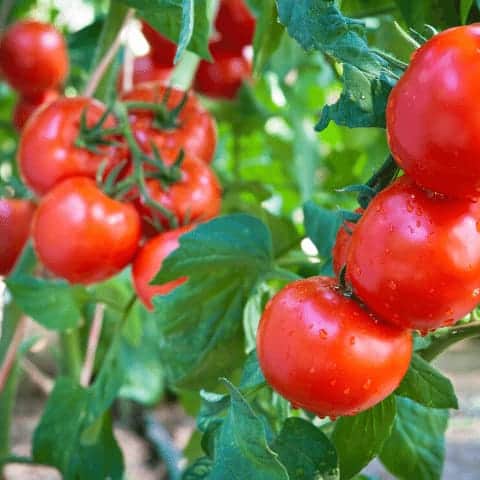Tomatoes (Latin name: Solanum), are probably one of the most popular vegetables grown in the entire world. It’s an annual plant with characteristic red berries that come in various shapes.
Tomato plants are usually easy to grow and are quite robust, however, they also suffer from the infestation of several pests. As with all vegetables, we need to be very careful about the kind of spray we put on them. Certainly, we wouldn’t want to use synthetic pesticides!
Luckily, we have a range of natural pesticides that we can use and some that we can even prepare at home.
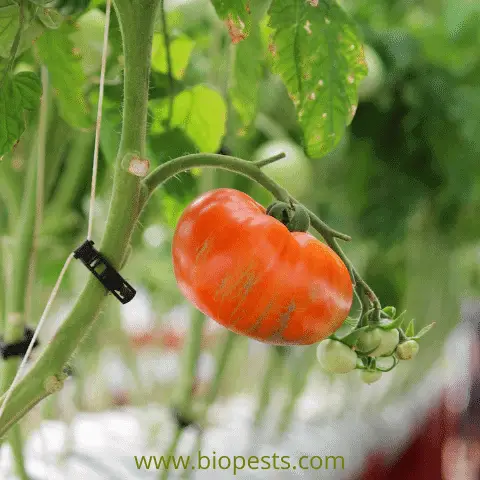
In this article, I would like to focus on the topic of organic pest control for tomatoes and its correct application. You will be able to prevent and eliminate pests invasions.
How To Make 9 Homemade Natural Pesticides For Tomato Plants:
Homemade sprays have the advantage of being friendly to the environment and are affordable alternatives to commercial synthetic pesticides.
Here below, is a list of 9 organic tomato pesticides that you can make at home.
1. Black Pepper Spray
Works best against: Cutworm
How To Make It: Mix 1 tbsp of black pepper to 12 ounces of boiling water. Let it cool overnight. Strain it into a spray bottle and spray the ground of your plants
2. Cornmeal
Works best against cutworms. (If you are not sure what cutworm is check this article here)
How To Apply It: Sprinkle cornmeal on the ground. The cutworm will eat it and die.
3. Diatomaceous Earth
Works best against: Hornworms, moths, crickets, centipedes, millipedes, slugs.
How To Apply It: Sprinkle DE on the plant and soil. This will kill the insect within 48 hours by dehydrating it. Want to discover the incredible benefits of using diatomaceous earth? Look no further, this article has got you covered!
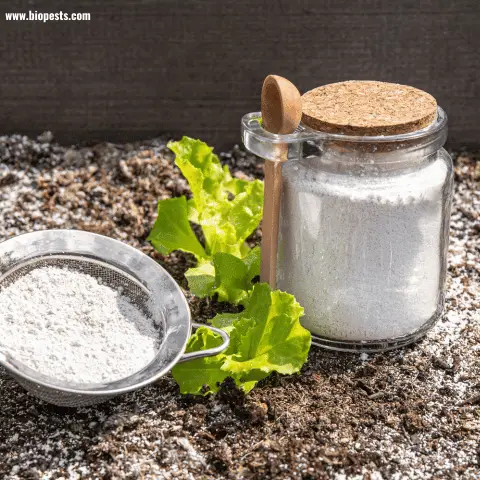
4. Garlic Spray
Works best against Aphids, whiteflies, cabbage loopers, yellow striped armyworm
How To Make It: In a mixer chop 1 clove of fresh garlic, 1 medium size onion, 1 tsp of cayenne pepper, and 1 tbsp of liquid Castile soap. Add 1 quart of water. Wait for an hour and then strain into a spray bottle.
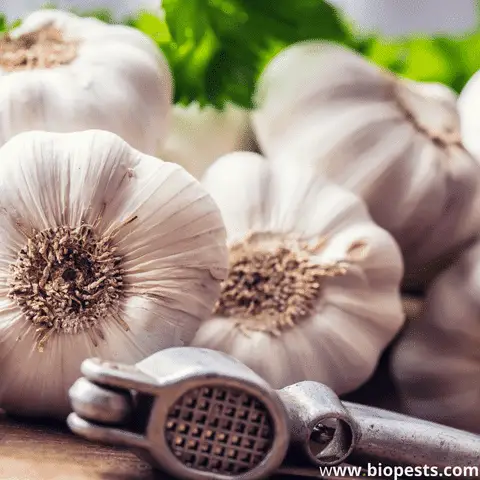
5. Rhubarb Spray
Works best against aphids, and mites.
How To Make It: Boil a few rhubarb leaves in water for 20 minutes. Let it cool, add 1 tsp of dish soap and strain into a spray bottle.
6. Marigold Spray
Works best against Hornworms, aphids
How To Make It: Mash some marigold leaves and flowers and soak them in two cups of water. Leave it overnight. Add 1 tsp of dish soap and strain into a spray bottle.

7. Vinegar Spray
Works best against slugs.
How To Apply It: Pour an equal solution of water and apple cider vinegar and spray directly on the slugs. Avoid spraying on the plant as it may kill it.
8. Epsom Salt
Works best against slugs.
How To Apply It: Sprinkle Epsom salt around the base of the plant or make a salt and water mixture to spray directly on the plant for prevention.
9. Cayenne Spray
Works best against aphids, spider mites, and whiteflies.
How To Make It: First, finely chop the garlic and add it to a quart-sized jar with cayenne pepper powder. Fill the jar with water, seal it, and allow it to steep overnight. Strain the mixture into a spray bottle and add liquid soap to make it stick to the plant leaves. Shake well before use and spray on your tomato plants as needed.
Always pay attention to the fact that spraying directly on your plant may kill also beneficial bugs. Avoid spraying during windy days, to prevent the spreading of the pesticide.
CAUTION: Although you are using natural homemade sprays, it doesn’t mean that they are harmless. Rhubarb leaves, for example, are extremely poisonous and fatal if ingested. Do not forget to wear gloves and protect your eyes. Always test the spray on a small portion of the plant or leaf and wait overnight to see how it reacts. Keep the pesticides away from the reach of children!
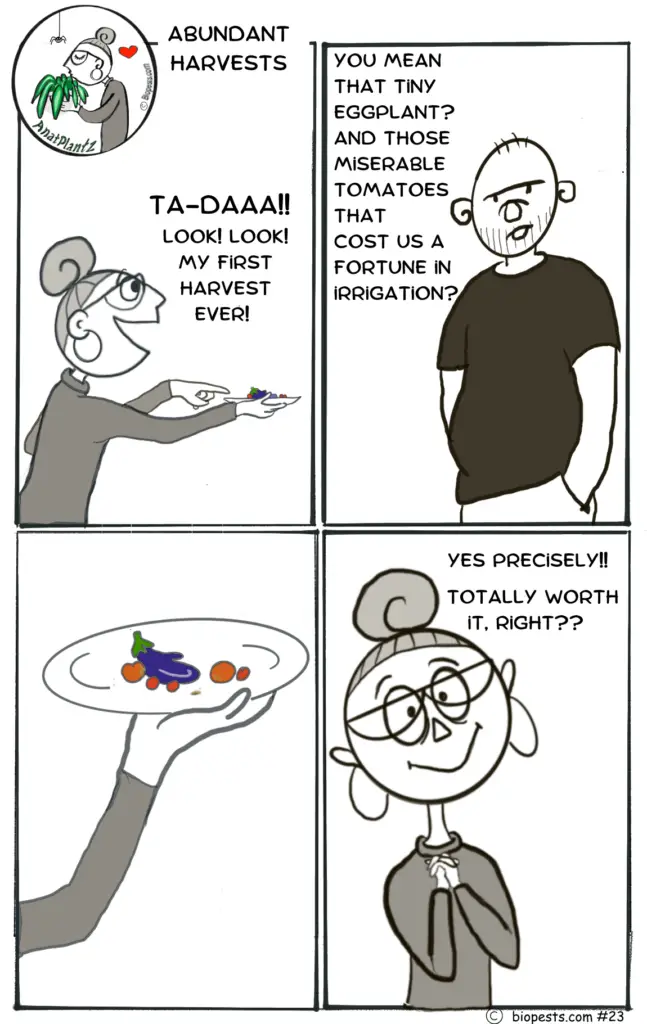
How do you make organic fungicide for tomato plants?
Unfortunately, insects and pests are not the only ones to attack our beloved tomato plants. There are microorganisms such as yeasts, mold, and mushrooms (which all belong to the fungi family) that have a devastating effect on our tomatoes. The most common diseases are:
- Anthracnose Fruit Rot
- Powdery Mildew
- Early Blight
- Buckeye Rot
Here are a few recipes on how to make organic fungicide for your tomato plants:

Baking Soda Spray:
Measures for 1-gallon container: 1-gallon water, 1 tbsp of baking soda, 1 tbsp of vegetable oil. Mix and spray directly on the plant. The solution will create a hostile living environment for the microorganisms. Do not spray during the warmest hours of the day since it might stress the plant. It is preferable to spray during the first hours of the morning or in the evening.
Milk Spray:
Milk deters powdery mildew. It is possible to mix in a spray bottle ½ cup of milk with 4 cups of water.
Neem Oil Spray:
Measures for 1-gallon container: 1-gallon warm water, 4 tsp of Neem oil, 2 tsp of dish soap. Shake well and spray directly on the plants.
What are other organic ways to protect your tomato plants?
Another level of protection is intercropping. Tomatoes do very well when cultivated with certain plants, but with other plants, they might not grow as healthy. It’s important to plant our tomatoes together with its “companion plants”. The synergy created will help the plants to flourish. Some companion plants will help to improve the health of the tomato plant while deterring pests and diseases.
The best companion plants for tomatoes are:
- Amaranth
- Asparagus
- Basil
- Borage
- Marigold (Calendula)
- Garlic
- Chive
- Cosmos
- Cucumber
- Mint
- Nasturtium
- Onion
- Peas
- Roses
- Squash
Did you know that tomatoes can protect roses from black spots, which is a fungal disease? Tomato leaves act as an antifungal. Besides planting the two together, you can make a spray by cooking tomato leaves in 4 pints of water and adding 1 tsp of cornstarch. This solution can be sprayed on the rose leaves.
The plants you should never plant close to your tomatoes are:
All type of cabbage (Broccoli, Brussels Sprouts, Kale, Cauliflower)
- Corn
- Dill
- Eggplants
- Fennel
- Peppers
- Potatoes
- Walnut
Let’s not forget that a companion plant might compete with tomatoes for water and nutrients. The science of companion planting is still in debate. There aren’t enough studies that can confirm the benefits of plant interactions.
Some of the links above are affiliate links, meaning, at no additional cost to you, I will earn a commission if you click through and make a purchase.

